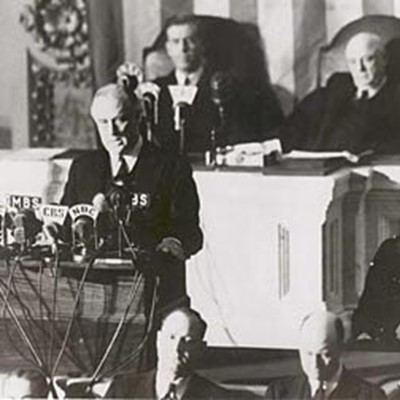
We came across a business column recently that asked a good question:
"Have you ever looked forward to attending a speech or lecture and departed from the talk empty, just not fully satisfied with the speaker, looking for more?"
We thought the column might address what goes into the content of a great speech. The writer went in a different direction, though, and explored the audience experience.
The columnist, Bob Elliott, touched on a lot things. Some of them go to building audience rapport—that good connection a speaker makes with the people who are in the room.
Since we've all been on a one-year hiatus from speaking to groups, it's easy to forget audience rapport can include the physical aspects of being in a room together. But a speaker's rapport with an audience can depend on questions like:
- Is the audience comfortable or are their seats a misery?
- Can the speaker make eye contact with everyone in the room—or are some people too far away or blocked from view?
- Is the room hot and stuffy?
- Can everyone hear the speaker easily?
As an audience member yourself, you have to admit: It's hard to enjoy a speech or presentation when you're uncomfortable and struggling to see or hear the speaker.
As a speaker, it's discouraging to think that you've worked hard on your message, and now it's being upstaged by a lousy air conditioning system or hard metal chairs.
As Mr. Eliott puts it:
Such is the art of public speaking … little things can, and should be done to guarantee success, things like starting by making sure that everyone is comfortable, that they are sitting in decent chairs, that they can now concentrate on what you are presenting. I have had friends who were assigned rooms to them where the sight lines were so horrific that half the audience was not able to see the speaker or rooms with stiff backed chairs that made it impossible to sit for more than five minutes.
What can you do to improve audience enjoyment? Here are our thoughts:
Check out the space in advance and make changes when you can.
For important speeches and presentations, we encourage speakers to be serious about preparing—and that includes seeing the space in advance. Usually our focus is on the speaker’s experience, though. Where will the lectern be placed? What kind of microphone is being used? What will the stage and the lighting look like?
We should add "consider the audience experience" to our speaker checklist. Ask about their seating arrangements. Look for potential obstacles and distractions.
Sometimes rooms are flexible and can be rearranged. Certainly, when we lead a program ourselves, we often arrive early and rearrange the room to improve the audience experience.
If you suspect the audience is struggling, ask.
Even when you've done a tech rehearsal, things can go wrong once your presentation begins. If you get the feeling that the sound system is letting you down or that your PowerPoint images aren't as visible as they need to be, check in with the audience. Try to fix the problem quickly or work around it. But don't trudge on and ignore it.
Then, don't keep dwelling on the difficulty. Make the adjustments that are possible, and refocus on getting your message across as best you can.
Be so prepared that you can change your plans, if necessary.
Is the room miserably hot or cold? Consider condensing your message. Can you move to a different spot in the room and deliver your speech in order to put yourself in a better place to see the audience? If so, abandon the lectern and go there. Can’t get the PowerPoint slides to work? You should be able to deliver your message without them.
When you have a strong message that you know well, you're better equipped to make on-the-spot changes—one more reason the time you invest in preparing is well-spent.
"He spoke without a note and almost without a point."
– Winston Churchill
Here's where you can find Mr. Elliott's column, which also makes some good points about using notes—and gives a bit of interesting teleprompter history.
And while we're all waiting to get back to in-person presentations, don’t forget that you can apply these ideas about audience happiness to virtual presentations:
- Check out the online platform you’ll be using and get comfortable with it.
- Check in with the audience if things aren't working as they should.
- Know what you want to say—because a strong, clean message is even more important when you're presenting online.






